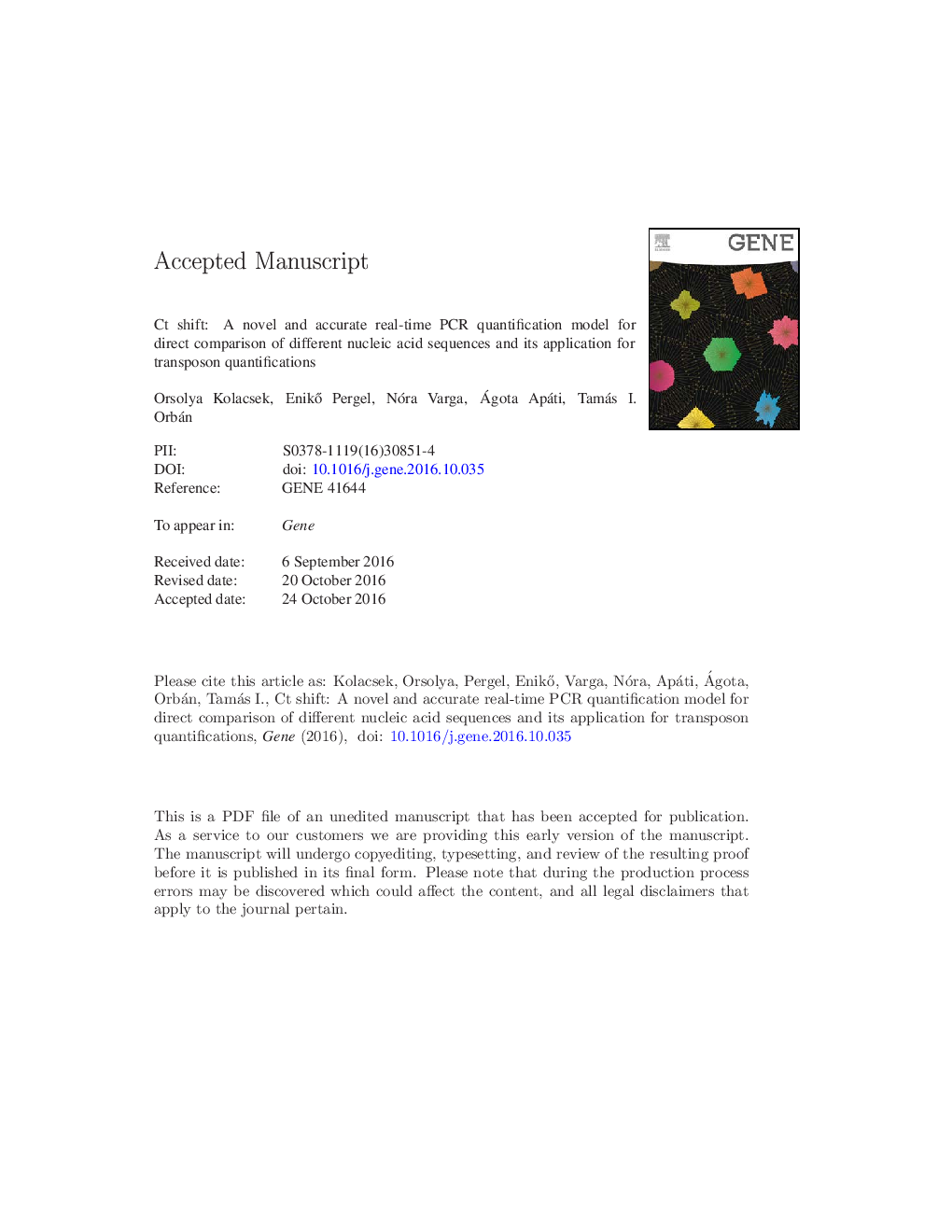| Article ID | Journal | Published Year | Pages | File Type |
|---|---|---|---|---|
| 5589899 | Gene | 2017 | 21 Pages |
Abstract
There are numerous applications of quantitative PCR for both diagnostic and basic research. As in many other techniques the basis of quantification is that comparisons are made between different (unknown and known or reference) specimens of the same entity. When the aim is to compare real quantities of different species in samples, one cannot escape their separate precise absolute quantification. We have established a simple and reliable method for this purpose (Ct shift method) which combines the absolute and the relative approach. It requires a plasmid standard containing both sequences of amplicons to be compared (e.g. the target of interest and the endogenous control). It can serve as a reference sample with equal copies of templates for both targets. Using the ÎÎCt formula we can quantify the exact ratio of the two templates in each unknown sample. The Ct shift method has been successfully applied for transposon gene copy measurements, as well as for comparison of different mRNAs in cDNA samples. This study provides the proof of concept and introduces some potential applications of the method; the absolute nature of results even without the need for real reference samples can contribute to the universality of the method and comparability of different studies.
Keywords
Cockayne syndrome BeGFPcomparative CtHSP90RT-PCRΔΔCtCSBqPCRQuantitative PCRcoding sequencereverse transcription PCRSleeping BeautyCockayne syndromeCopy numberPromoter activityrelative quantitysplice variantquantitative polymerase chain reactionHeat shock protein 90enhanced green fluorescent proteinthreshold cycleCdS
Related Topics
Life Sciences
Biochemistry, Genetics and Molecular Biology
Genetics
Authors
Orsolya Kolacsek, EnikÅ Pergel, Nóra Varga, Ágota Apáti, Tamás I. Orbán,
